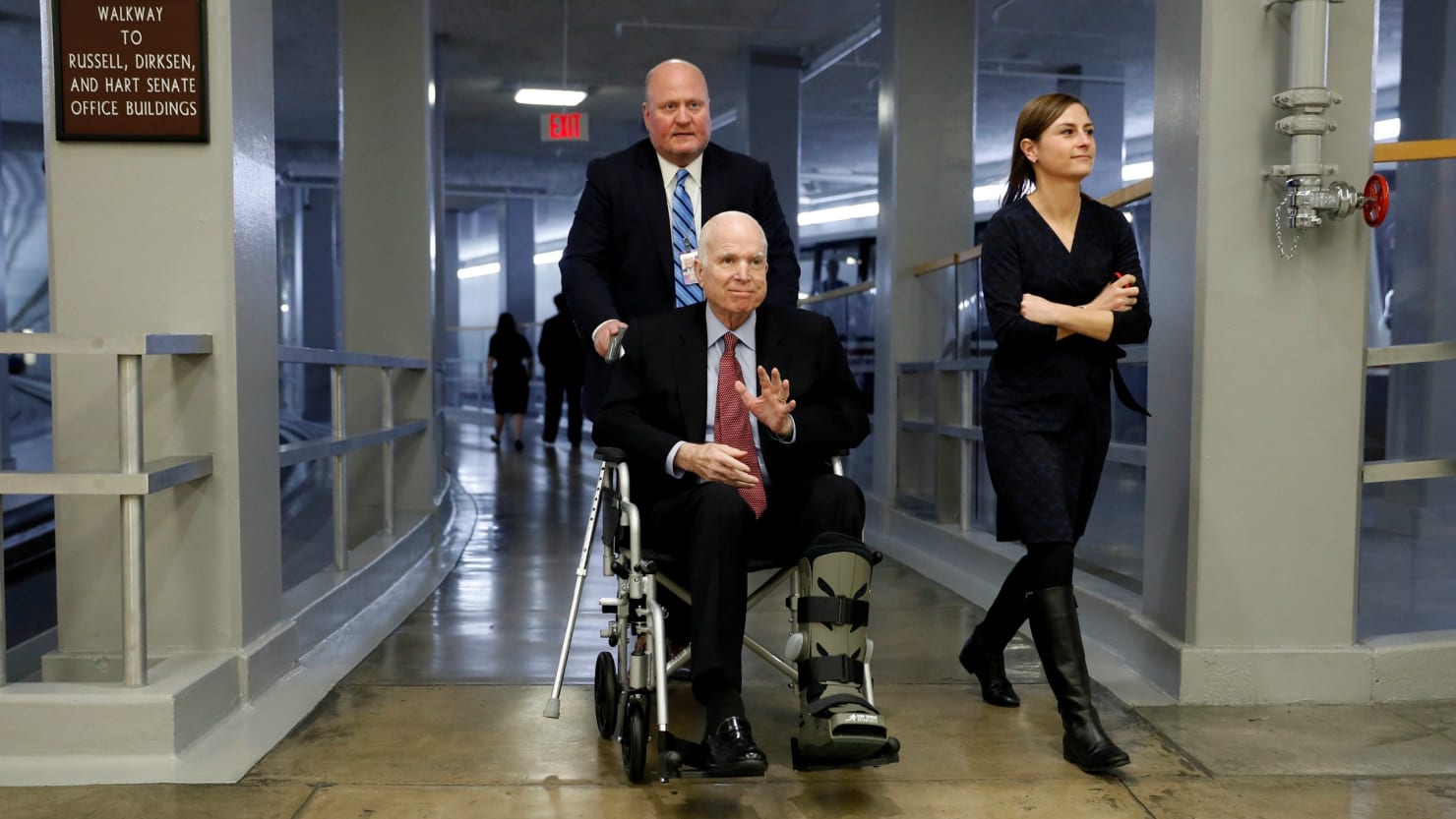John McCain's Brain Cancer, Glioblastoma, Is Nearly Impossible to Treat John McCain’s Brain Cancer, Glioblastoma, Is Nearly Impossible...

Researchers are working to figure out how to detectâ€"and fightâ€"glioblastoma.

John McCain died from a form of brain cancer called glioblastomaâ€"an extremely complex malignant tumor that is difficult to treat and, for now, impossible to cure.
Glioblastoma affects the glial cells, the sticky supportive membranes that surround the brain’s nerve cells, and affects some 200,000 Americans a yea r. Sen. Ted Kennedy died from it nine years ago.
It’s distinguished from some other types of brain cancer by its speed and viciousness.
“There are many kinds of brain cancer,†said Alfred Yung, a professor at the University of Texas MD Anderson Cancer Center and a researcher working with the National Cancer Institute. “They range from very slow-growing, benign brain tumors that are not likely to kill the patient very quickly to ones that derive from glial cells.â€
Two things make glioblastoma especially difficult to treat. First, researchers have no idea exactly why glial cells turn cancerous. Theories range from genetics to environmental risk factors to some combination of the two. The second is the cancer’s location, lodged so deep within the brain that it is nearly impossible to cleanly separate the tumor from the delicate organ.
“The tumor is very complex,†Yung said. “It's a mixture of different kinds of cancer cells and different b ehavior.â€
But research is growing. Former Vice President Joe Biden is concentrating his post-White House efforts on leading the Biden Cancer Initiative after his son Beau died from a recurrence of brain cancer (not glioblastoma). He comforted McCain’s daughter last December and highlighted the advances being made in the brain cancer field.
Gordon Li, a neurosurgeon at Stanford University specializing in brain tumors, said that what makes glioblastoma incurable is its ability to multiply and take over the organ, which is central to the operation of the whole body, and the difficulty in spotting and removing cancerous cells and tumors.
Because of the brain's dense folds, even a slight ding from laser or radiation can be dangerous. And even if a tunor is removed, the cancer almost always returns.
“Glioblastoma has micro tumor cells that go through the brain ... and all over,†Li told The Daily Beast. “Taking out only one part of the brain doesn&# 039;t make sense.â€
Because survival rates hover at less than five percent, researchers are anxious to figure out what makes a person's glial cells become cancerous. “We could diagnose it earlier, so we could take [the cancer] out [earlier], or we could work on agents to see the tumor better,†Li said.
Oncologists and researchers have tried a variety of methods to delay death. Glioblastoma's complexity means a combination of drugs and therapies are required to treat it, which can be tough on the patient. “When you use multiple things, you're likely to induce side effects,†Yung said. “And we still do not understand the tumor's biology and genetics well. We still don't know enough about glioblastoma to know how many drugs to use and what kind of drugs and how much radiation to use.â€
Treatment is further complicated by the blood-brain barrier, which prevents toxic products in the bloodstream from reaching the brain's most in tegral cells.
Immunotherapy is another area of research, but glial cells do not have many T-cells, which is a hurdle. Using antibodies and gene therapy to change the way these cells work is a possibility but research is in the early stages.
Li has experimented with dyes to try to trace the tumor and its cancerous path. He's also considered the physics of these dyes in the brain to figure out exactly what brain tissue the cancer could go to next “in a more defined manner.â€
“There's some new imaging techniques where we use different MRI [magnetic resonance imaging] and different radiographic tracers to trace the vast majority of the tumor,†he said. That could help doctors start radiation and chemotherapy earlier.
While techniques are improving, Li and Yung said glioblastoma statistics remain grim. “The average survival rate is between 1.5 and two years,†Li said. “There are patients who will live longer, there will be patients who don&# 039;t live as long.†McCain lived less than a year after his diagnosis publicly announced.
The variable survival time is a sign of differences in how glial cells work. Delving into that could uncover genetic markers and lead to better treatments, Li said.
“Don't get me wrong, it’s a bad cancer,†Li said. “But over the past 15 years, we’ve understood a lot more about the biology and we have a lot of hope.â€
Source: Google News US Health | Netizen 24 United States

